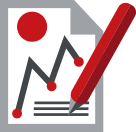Author: Timothy Hare
VP, Head of Data Science, 81qd
New York, NY
A purely AI-driven design of drug candidates is coming into its own, as scientists discover better AI model inputs for drug candidate features (molecular “feature encodings” that AI consumes), as well as improved physical molecular library design. Molecular library design involves the purchase and/or chemical synthesis of a broad range of molecular structures. This inventory is then stored in very large automated warehouses for testing across all future drug programs.
Strategies coming from AI recommendations, where AI designs truly novel drug candidates that medicinal chemists might not otherwise have created, represents a strategic and tactical paradigm shift. Participation of AI in this way will provide higher quality candidate drugs for validation, as well as expand diversity in the molecular libraries used for other therapeutic area opportunities. Preclinical LID assay development has been made more robust by AI, which is able to interpret a broad array of complex data. Large, complex mixtures of data such as candidate drug biophysical attributes (solubility, size, etc.) as well as protein and gene network expression data are increasingly fed into AI to provide a richer constellation of information to model.
Also, live cell assays where the size, shape, and health of the cell are observed after exposure to candidate drugs, can be interpreted by AI. The capacity to quickly process this vast and diverse body of information means that AI is now able to contribute new information in areas like drug-target interaction theory, rational drug design, biological pathway analysis, and the planning that goes into new drug synthesis by medicinal chemists.
Enhancing LID Assay Quality with AI Monitoring and Predictive Insights
AI is also being used to improve early warning of diminished LID assay quality by monitoring the inputs, the outputs, the robotics, and the influence of uncontrolled factors in the environment in which these complex automated processes run. The cost of complexity can be instability, and complex systems are prone to failure in ways that can’t be anticipated by humans, but can easily be predicted by AI. Round-the-clock system monitoring can dramatically reduce the cost of R&D attributable to materials waste, the challenge of scheduling the use of limited fixed resources such as shared robotic platforms, and the cost of rework when systems degrade and the product becomes unacceptable.
With the advent of new FDA standards and guidelines, the direct impact of AI on clinical trials will be manifested by the increased diffusion of innovative therapies into the design and execution of clinical trials. In addition to the marked improvements that AI will undoubtedly directly effect on the clinical trial landscape, there are a number of indirect impacts that will also contribute to reshaping R&D.
When you consider the fact that only about one out of eight PCCs will ultimately make it to market, the total R&D burden in modern biopharmaceutical drug discovery becomes clear. Studies estimate that the full life cycle development cost of bringing a single new drug to market may average almost $3bn. This is up from $802m in 2003 or approximately 275% in 15 years, unadjusted for inflation.
Studies also focus on industry productivity and profitability. Productivity and profitability in the biopharmaceutical industry have been declining as well, and some studies indicate that the industry may soon reach a crisis point if this trend is not reversed. A recent study indicates that R&D returns in drug development currently stand at 3.2% and could reach 0 in 2020, meaning that a dollar would return a dollar— ie, no profit.
AI will be the catalyst to slow down and eventually reverse this trend in the biopharmaceutical industry. AI has the potential to dramatically improve clinical trial efficiency and effectiveness, directly and indirectly, ensuring that the volume of new drugs for unmet medical needs coming to market continues and even accelerates.




